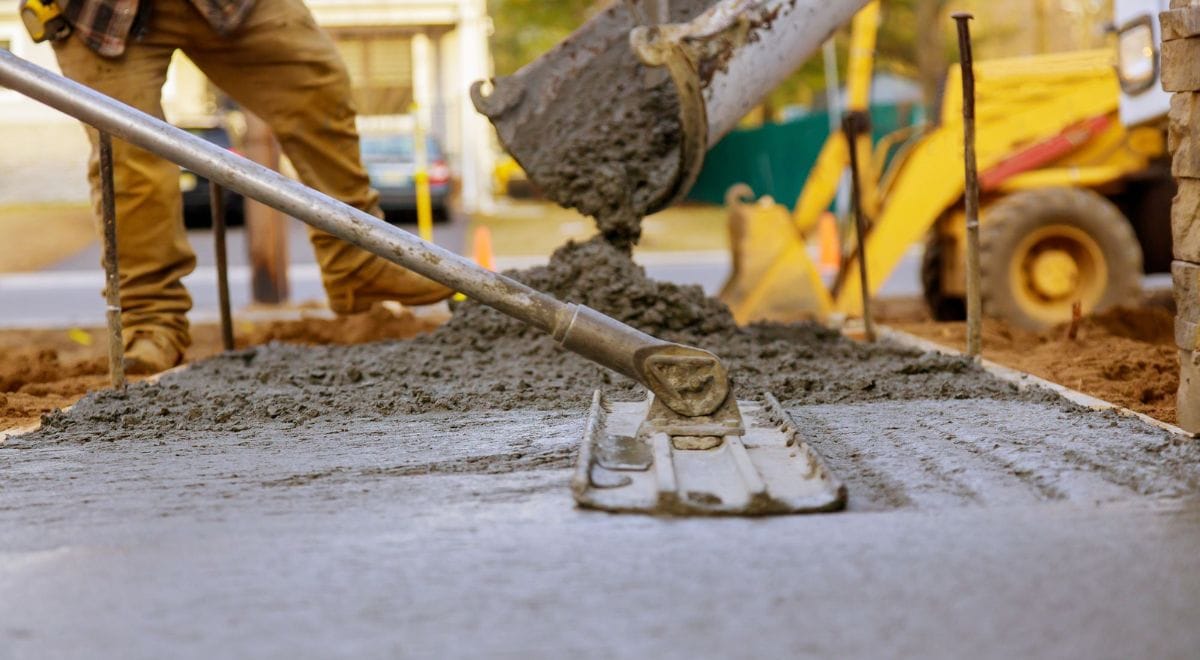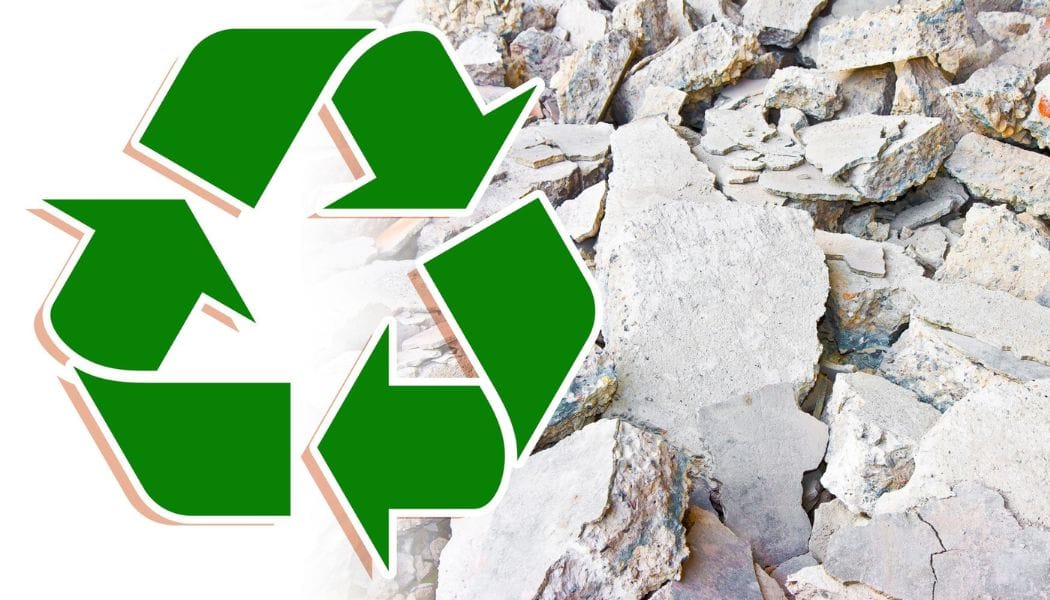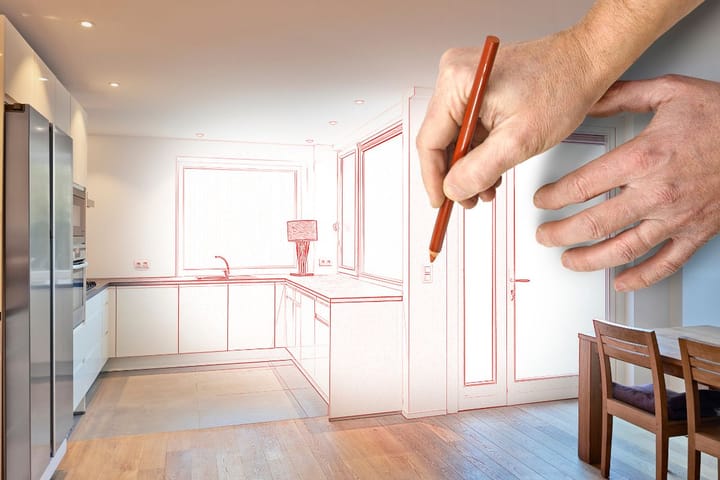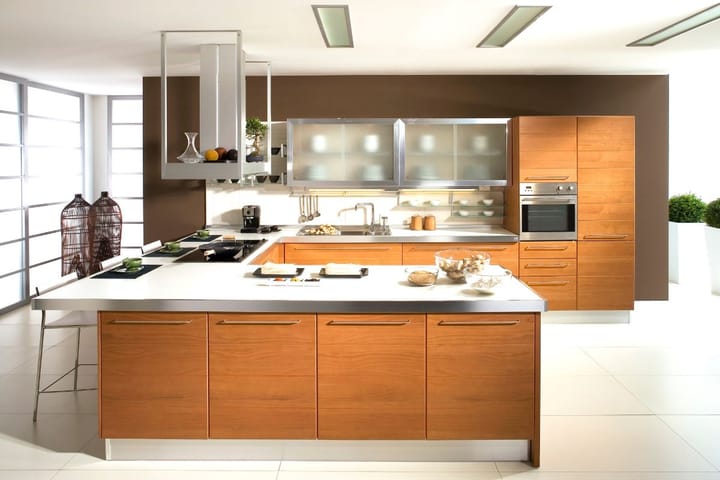How To Save Money With Concrete
Steering through construction costs is tough. Concrete, often overlooked, can reduce expenses significantly. It's sturdy, versatile, affordable, and transformative for residences and commercial areas.

Navigating the complex waters of construction and remodeling costs can be a challenging feat. However, a solution that is often overlooked, yet can substantially lessen these costs, is concrete. This robust, adaptable, and economical material has proven revolutionary in residential and commercial sectors.
In an article by Statista, they explain that the mix of coarse materials like stone or gravel and cement produces concrete. Furthermore, they state that this is the world's most widely used building material.
Below, you can delve into the depths of concrete's financial benefits. More importantly, it can demonstrate how you can capitalize on it to save money without skimping on quality or aesthetic appeal. So, explore the diverse financial benefits that the world of concrete has to offer.
Decoding Concrete: A Basic Overview
At its most basic level, concrete is a composite material. Modern versions include cement, alumina, lime, water, silica, and aggregates. Although this might sound simple, this mixture's sheer power gives concrete its renowned low cost, high durability, and flexibility.
As soon as property owners calculate concrete costs based on these attributes, they may be pleasantly surprised by the potential savings. However, there are many types of concrete to consider, like the following:
- Precast
- Lightweight
- Plain
- Reinforced
- High density
- Air entrained
- Rapid hardening
- Glass
- Asphalt
- Lime
The type of concrete could depend on the application. To make the right decision, consult with a professional in your area. Concrete often finds its application in an extensive range of areas, some of which are:
- Building construction: Concrete is the cornerstone of many building elements, such as foundations, walls, floors, and ceilings.
- Infrastructure: From roads and bridges to dams and tunnels, concrete is the backbone of our infrastructure.
- Landscaping: Concrete adds value and functionality to outdoor spaces, forming patios, walkways, retaining walls, and more.
What isn't always apparent is that the monetary savings derived from using concrete are not just limited to the initial investment. They continue to unfold throughout the lifetime of the concrete structure—especially when buying it from companies like Blundell Concrete or similar companies with vast experience in the field.
Unleashing The Power Of Durability: Your Economic Workhorse

One significant money-saving attribute of concrete is its extraordinary durability. Provided the design and build are correct, the remarkable longevity of concrete structures is a testament to this. With a life expectancy that easily spans many decades, these structures minimize the long-term costs tied to regular repairs and replacements.
Comparatively, even though materials like wood or certain metals may seem less expensive initially, they may require frequent maintenance and eventual replacement. Additionally, all of it adds to the overall cost.
Hence, despite concrete's potentially higher upfront cost, it is a financially sound investment in the long run. Both builders and investors will agree—concrete is the perfect workhorse.
The Weather Warrior: Concrete's Resilient Side
Concrete's impressive resistance to varying weather conditions is another aspect that significantly enhances its cost-effectiveness. It is such a resilient material. Therefore, concrete can hold its own against a wide array of climatic conditions, which include:
- High temperatures: Concrete doesn't warp or melt under sweltering conditions. Plastic or other porous materials, on the other hand, could wither away, crack, or become brittle during raised temperatures.
- Sub-zero temperatures: Concrete can endure freezing temperatures without damage if adequately prepared and installed. Because it doesn't have high heat conductibility, it doesn't shrink as much as other materials in cooler weather.
- Wet conditions: Concrete exhibits commendable resistance against water damage and erosion. Once the mixture sets into its final form, it isn't as susceptible to damp conditions as wood or plastic.
Property owners can avoid potential financial burdens due to weather-induced wear and tear by choosing concrete structures. Only after years of use may they want to consider the integrity of the concrete or when they notice evident signs of distress in the material.
Cutting Costs: Concrete's Low Maintenance
A significant cost advantage that concrete offers is its low maintenance requirement. However, other building material counterparts, such as wood or metal, may need constant upkeep in painting, sealing, or varnishing.
Although one would want to protect your investment to preserve its appearance and prevent damage, concrete demands substantially less maintenance. Property owners can thus spend their hard-earned finances on other improvements or building additions.
Think about the money that you can save from not having to:
- Frequently repaint or reseal surfaces unless you want to stain or paint concrete fixtures like a driveway.
- Fix damages caused by pests like termites, which are not a concern for concrete.
- Replace materials that have succumbed to rot, rust, or warping.
It becomes clear that the low maintenance characteristic is one of the most significant cost savers for a property.
The Energy Efficiency Equation: Concrete's Overlooked Virtue
Often overshadowed by other attributes, another critical financial benefit of concrete is its contribution to energy efficiency. The thermal mass properties of concrete enable it to absorb, store and gradually release heat.
This unique ability helps stabilize indoor temperatures, reduce dependence on artificial heating and cooling systems, and reduce energy costs. Concrete also tends to have fewer gaps, making for a more secure structure.
In other words, heat or cold stays inside longer and doesn't escape as quickly as other building materials. Keeping the temperature inside the building comfortable becomes an easy task.
Redefining Aesthetics: The Innovative Side of Concrete
Gone are the days when people considered concrete a plain and dull material. On the contrary, modern advancements in concrete technology have introduced an array of decorative options. Not only does this allow for a stylish, high-end finish, but it also brings down the costs.
Premium materials come at an exorbitant cost, meaning many contractors and their clients now prefer the decorative concrete techniques listed here:
- Stamped concrete: This technique involves creating patterns and textures on the concrete surface to mimic the look of stones, bricks, or tiles. Contractors often use this technique to finish driveways, walkways, or indoor floors like garages.
- Stained concrete: You can achieve multiple colors and visual effects on concrete surfaces by adding a stain or dye pigment while mixing. Doing so makes the floor, wall, or other surfaces blend seamlessly with the rest of the décor.
- Polished concrete: You can give concrete a high-gloss, chic finish that's visually appealing and easy to maintain through grinding and polishing. To achieve this finish, contractors add a gloss polishing agent over the set concrete and then use machines to buff it to give it an almost mirror shine. Experts such as Infinity Flooring provide world-class polished concrete services, answering a wide range of customer questions along the way.
- Concrete overlays: Because concrete is a low-cost, easy option for property owners to jazz up old surfaces, many opt to cover it with this material. Knowledgeable contractors can prepare the floor by scraping away unnecessary layers of glue, carpeting, vinyl, or other materials before pouring over a layer of concrete. As it's relatively straightforward to do this yourself, some prefer to save even more money and go the DIY route.
More importantly, the aesthetic depends on the preferences of the property owners. By choosing the right contractors or experts, they can quickly customize their space into something they can enjoy for years.
Reusability And Recycling: The Eco-Friendly Money Savers
Not many people are aware that concrete can be reused and recycled. Old concrete structures or surfaces get crushed and reincorporated as aggregate in new concrete or used as a base material for roads, sidewalks, and pipes.
Furthermore, the recycling process of concrete offers multiple benefits, including the following:
- It reduces the cost of waste disposal: Renovations often have mounds of rubble, but with recyclers collecting the concrete chunks, contractors do not need to make other arrangements. Hiring a waste bin for the duration could only add to project costs and create an eyesore for the neighbors.
- It reduces the demand for new materials: Instead of opting for new materials, reusing concrete could lower material procurement costs. New material manufacturing also significantly affects the environment, leaving property owners to consider their part in a sustainable future for all. Saving mother nature and costs could, therefore, become an attractive option.
- It cuts down on transportation costs: Both old and new materials need transportation to and from the construction site. When involving a recycling agent, contractors thus also save transport costs as they don't have to use their vehicles to remove materials from the construction site. Using the old materials further reduces the prices as they already have everything they need onsite.
Starting any construction, DIY, or rebuilding project requires thorough planning. So why not consider adding reusing or recycling concrete to it?
Conclusion
After reading here, it should be clear to you and your contractors that concrete is an affordable construction material and a powerful ally in saving money. From its exceptional durability and weather resistance to its low maintenance, energy efficiency, innovative applications, and recyclability, concrete presents a myriad of opportunities for cost-saving.
Also, the economic advantages of concrete go hand in hand with its environmental benefits. Many therefore classify it as a holistic choice for a construction or remodeling project. The promise of financial savings, durability, and environmental sustainability makes concrete an all-star material, whether constructing a towering skyscraper or revamping a cozy backyard.
So why wait? Start exploring the various concrete options available to you today and set sail on your journey of savings. Because when it comes to building and saving wisely, concrete indeed leads the way.




Comments ()